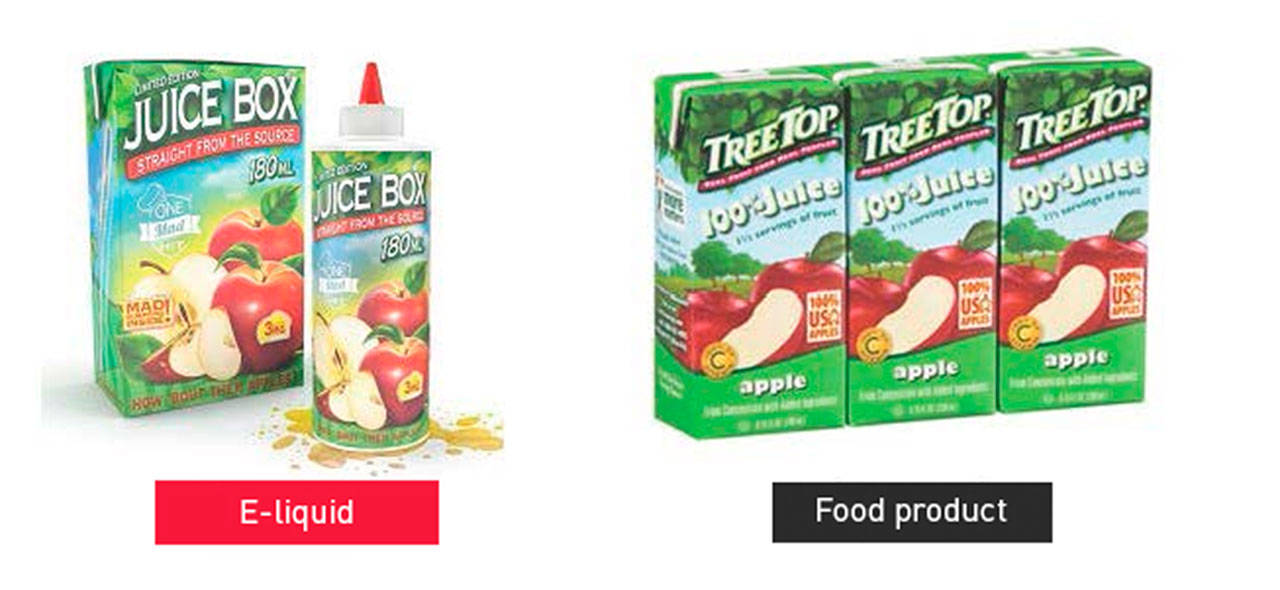The following is written by Carley Thompson for Public Health Insider:
Gummy bear, cotton candy, berry blend, root beer float, banana split. Are these your favorite treats or are they flavors of tobacco products? Hard to tell, right? Kids get confused too.
When it comes to tobacco products, particularly e-cigarettes, flavor attracts kids and puts them at risk of a lifetime of nicotine dependence.
Flavors are fueling the youth e-cigarette epidemic
In recent years, there has been an explosion of sweet-flavored tobacco products (15,500 tobacco flavors and counting) that have fueled the popularity of e-cigarettes among kids.
Nationally, e-cigarette use among middle and high school students drastically increased between 2017 and 2018. According to data from the 2018 National Youth Tobacco Survey, there was a 78% increase in current e-cigarette use among high school students and a 48% increase among middle school students – that’s 1.5 million more middle and high school students using e-cigarettes than in the previous year. In King County, we don’t have our 2018 National Youth Tobacco Survey data available yet, but 2016 data showed that twice as many youth are vaping as are smoking cigarettes. 10% of 8th, 10th and 12th graders used e-cigarettes compared to 5% who smoked cigarettes.
Kids are attracted to flavors. A lot of kids are using e-cigarettes (3.6 million during 2017-2018), and more than two-thirds (67.8 %) are using flavored e-cigarettes. Data show that 8 out of 10 teens who use tobacco started with a flavored product. Flavored tobacco products have been proven to appeal to youth and facilitate the start of tobacco product use. Almost all e-cigarettes used by youth are flavored to taste like menthol, alcoholic drinks, candy, fruit, chocolate or other sweets. Flavored tobacco comes in bright packaging and is often designed to look like kid-friendly snacks and beverages. Flavors mask the harshness of tobacco, making it easier for kids to get hooked on nicotine.
Read our recent blog post to learn more about why e-cigarettes are so dangerous for kids; part of the problem – youth who use e-cigarettes are more likely to start smoking conventional cigarettes and increase use of both products.
Why tobacco companies flavor their products
Almost all adult smokers started smoking when they were kids. Nearly 90% started smoking before age 18 and 95% by age 21. Attracting kids to tobacco at an early age makes it more likely that they will become addicted to nicotine (kids can get addicted to nicotine more easily than adults– think: developing brain) and use tobacco products throughout their life, providing the tobacco industry with ideal customers.
Continuing a long tradition of designing products that appeal to young users, e-cigarette companies employ many of the same strategies used for years by cigarette manufacturers that proved so effective in reaching kids, such as celebrity endorsements, sports and music sponsorships, and TV and magazine advertisements.
According to the Centers for Disease Control and Prevention, e-cigarette companies spent $115 million on advertising in 2014, exposing more than 18 million middle and high school kids to e-cigarette ads.
Current policies allow flavored tobacco products, but that could be changing
In 2009, the U.S. Food and Drug Administration (FDA) banned candy and fruit-flavored cigarettes to protect youth from initiating tobacco use. However, the ban does not include other types of flavored tobacco, leaving the door wide open to flavored e-cigarettes and e-juices, cigarillos, cigars, smokeless tobacco and other products still in development.
Last month, the FDA announced their plans to curb the appeal of e-cigarettes to kids in part by escalating enforcement against retailers who illegally sell e-cigarettes to minors, and by banning flavored e-cigarettes from being sold at convenience stores. Their plan would also restrict all flavored e-cigarettes (other than tobacco, mint and menthol flavors) to being sold in age-restricted, in person locations and if, sold online, under heightened age verification practices.
The same announcement proposed a ban on menthol cigarettes and flavored cigars. Menthol cigarettes are one of the most common pathways kids take to use of combustible cigarettes. Menthol masks some of the unattractive features of smoking that might otherwise discourage children from smoking. Youth smokers are more likely to use menthol cigarettes than any other age group. More than half (54%) of youth smokers ages 12-17 use menthol cigarettes, compared to less than one-third of smokers ages 35 and older.
Compared to adults (25 or older) who smoke cigars, a high proportion of kids who smoke cigars use flavored cigars. Data indicate that banning flavored cigars would likely help prevent kids from using cigars.
Making tobacco products less accessible and less appealing to kids by removing kid-friendly flavors can help break the cycle of addiction to nicotine, saving a whole generation of kids from a lifetime of using tobacco products.
More information:


